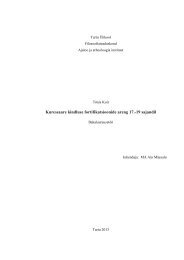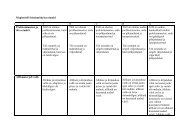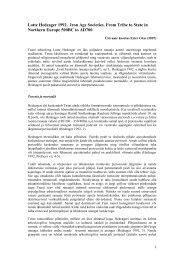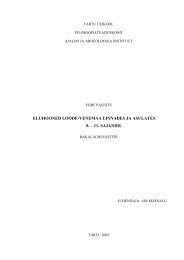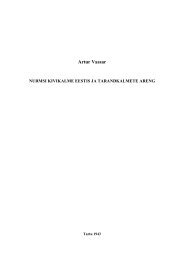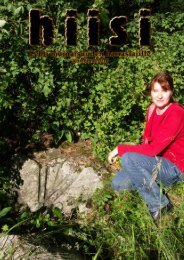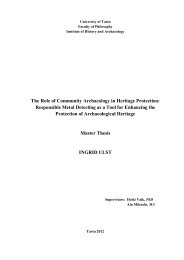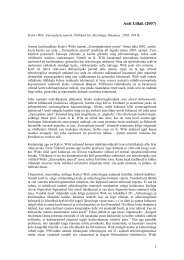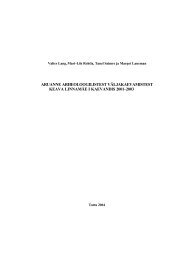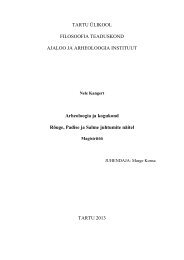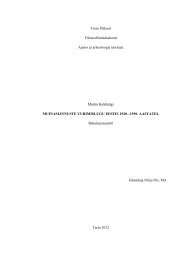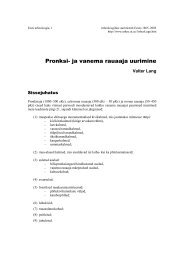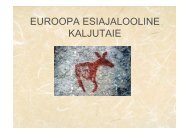PDF file (4 MB) - Arheoloogia Tartu Ãlikoolis
PDF file (4 MB) - Arheoloogia Tartu Ãlikoolis
PDF file (4 MB) - Arheoloogia Tartu Ãlikoolis
Create successful ePaper yourself
Turn your PDF publications into a flip-book with our unique Google optimized e-Paper software.
The topics of household archaeology discussed in this work (the use-life of buildings<br />
and its related term ‘household series’; the distribution of archaeological artefacts and<br />
the possible households with which the artefacts can be associated) make it possible to<br />
focus on the problems connected to the long development of the archaeological findings<br />
of the Uderna II settlement site and poor preservation of buildings, as well as to<br />
distinguish possible household series on the excavated area.<br />
On the basis of the archaeological findings and extant written sources, the history of<br />
Uderna from the Mediaeval Period up to the second half of the eighteenth century can<br />
be divided into two longer periods, the first lasting from the Late Iron Age up to the end<br />
of the Mediaeval Period and the latter encompassing the Early Modern Period up to the<br />
second half of the eighteenth century. A line must be drawn between the Mediaeval<br />
Period and Early Modern Period, for the gradual changes that had been taking place<br />
since the early days of the colonization period had significantly altered the social<br />
structure and life patterns of rural Estonians. Written historical records bear witness to<br />
these changes; however, the changes can also be seen from the archaeological findings<br />
from the Uderna site. Both periods are characterized in the following text, which, by<br />
analyzing several kinds of sources, gives a brief description of the village of Uderna, the<br />
life of its inhabitants, and the historical events and processes that have influenced its<br />
development.<br />
The Uderna II Settlement Site in the Late Iron Age and in the Mediaeval Period<br />
There are almost no written sources concerning the village of Uderna from the Late Iron<br />
Age and the Mediaeval Period. Sources from later periods allow us to deduce that in the<br />
Mediaeval period, and probably earlier as well, there existed two villages in the area of<br />
the contemporary one. The settlement site Uderna I (the former Väike-Uderna village)<br />
was situated along the northern side of a valley, and the settlement site Uderna II (the<br />
former Suur-Uderna village) along the southern side. The latter settlement site, Uderna<br />
II, is the one discussed in this text.<br />
The continuous settlement of the village probably began in the 11 th century. The<br />
settlement slowly moved northwards during the centuries, also moving down from the<br />
highest, southern area of the valley’s slope. From the Late Iron Age and the Mediaeval<br />
110



